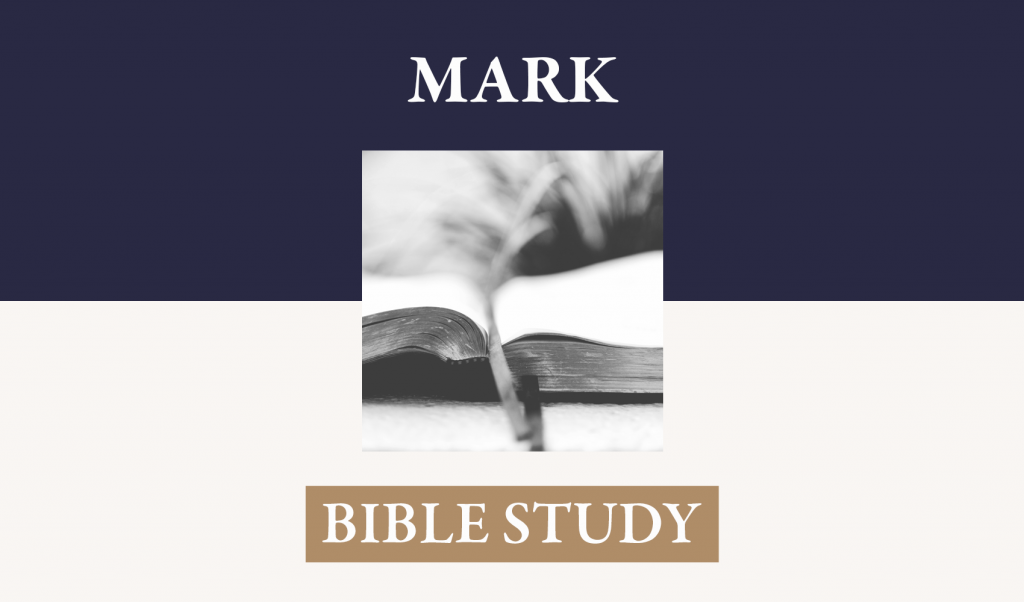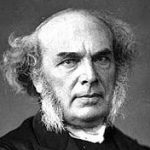The Point: Jesus has power over all my fears.
Jesus: Lord of Nature: Mark 4:35-41.
[35] On that day, when evening had come, he said to them, "Let us go across to the other side." [36] And leaving the crowd, they took him with them in the boat, just as he was. And other boats were with him. [37] And a great windstorm arose, and the waves were breaking into the boat, so that the boat was already filling. [38] But he was in the stern, asleep on the cushion. And they woke him and said to him, "Teacher, do you not care that we are perishing?" [39] And he awoke and rebuked the wind and said to the sea, "Peace! Be still!" And the wind ceased, and there was a great calm. [40] He said to them, "Why are you so afraid? Have you still no faith?"
[41] And they were filled with great fear and said to one another, "Who then is this, that even the wind and the sea obey him?" [ESV]
“The material in 3:13-4:34 consists of conversations, controversies, and parables. Readers are suddenly transferred in 4:35 to the resumption of Jesus’ public ministry around the lake. The four stories in this section, longer and more detailed than many of Mark’s pericopes, all highlight Jesus as a miracle worker. His mighty acts evoke a judgment from those who witness them. The disciples in the foundering boat must choose between faith and fear [4:35-41]; the witnesses of the healed Gerasene demoniac must choose between acceptance and rejection of Jesus [5:1-20]; both Jairus and the hemorrhaging woman must choose between faith and despair [5:21-43]; and even Jesus’ hometown in Nazareth must choose between belief and disbelief. The initial step of faith may not seem like one at all, for the presence of Jesus is first of all an unsettling presence. His disciples ask, Who then is this [4:41], and his family and acquaintances in Nazareth ask, How are such mighty works done by his hands [6:2]. The right judgment of Jesus cannot be made by following convention, for Jesus supersedes the powers of nature, demons, illness, death, and family influence. Confining Jesus within such categories and stereotypes is to misunderstand Him; acknowledging His supremacy to such categories is the first act of discipleship. [35-41] The calming of the storm is full of vivid details, many of which are flattened or omitted in the versions of the story in Matthew 8:23-27 and Luke 8:22-25. Mark’s version is replete with eyewitness characteristics: the hour of day [35], the reference that the disciples took Jesus from the boat in which He was sitting [36], the presence of other boats, [36], the boat’s drawing water [37], Jesus’ sleeping on the cushion [38], the disciples’ sarcasm [38] and Jesus’ rebuke [40]. Particulars such as these are evidence of firsthand narration, and Peter is again a likely source. These historical details are not related randomly and inchoately, as one might find in a diary entry, for example. The story exhibits sophisticated theological thought and reflects in particular the influence of Jonah 1 and Psalms 107:23-32. The calming of the storm illustrates Mark’s larger purpose of interpreting historical events theologically so as to show Jesus as God incarnate and His significance for discipleship. [35-36] Mention of other boats may allude to the larger circle of disciples beyond the Twelve who were with Jesus in 3:34 and 4:10. The curious detail that they took him with them in the boat, just as he was probably reflects the memory of the disciples that Jesus was taken directly from the boat in which He was teaching the crown [4:1], without His having returned to the shore. The fishing boat was probably 26 ½ feet long, 7 ½ feet wide, and 4 ½ feet high. Both fore and aft sections of the boat would have been covered with a deck, providing space on which to sit or lie. The boat was propelled by four rowers (two per side) and had a total capacity of about fifteen persons. [37] The disciples and Jesus launch out eastward across the lake. Mark does not state their purpose, but Jesus’ desire to preach elsewhere may apply here. The Sea of Galilee lies nearly seven hundred feet below sea level in a basin surrounded by hills and mountains that are especially precipitous on the east side. Thirty miles to the northeast Mt. Hermon rises to 9,200 feet above sea level. The interchange between cold upper air from Mt. Hermon and warm air rising from the Sea of Galilee produces tempestuous weather conditions for which the lake is famed. The great windstorm of verse 37, which in Greek can mean ‘hurricane’, fits the stories of Galilean fishermen even today, to whom the early evening easterly wind is known as ‘Sharkia’ (Arabic for ‘shark’). Although the Greek word for the great windstorm is not used in Jonah, in other respects the description of the storm in verse 37 echoes the violent storm that befell the ship in which Jonah was fleeing [Jonah 1:4]. [38] As Jonah retired to the bowels of the ship and fell into a deep sleep [Jonah 1:5], Jesus is also described by Mark as sleeping on a sailor’s cushion in the stern of the boat. Ironically, the only place in the Gospels that we hear of Jesus sleeping is during a storm. The scene depicts His complete trust in God in the midst of adversity, like the farmer in the preceding parables [4:3-9,27] who trusts God’s providential working over all obstacles and adversities. As in the Jonah story, the disciples, some of them veteran seamen, are terrified by the ferocity of the storm. The captain of Jonah’s ship upbraids Jonah for sleeping while the crew is perishing; likewise the disciples reproach Jesus, Teacher, do you not care that we are perishing? The rudeness of Mark’s wording reflects the way frustrated and desperate people speak and is probably a verbatim reminiscence of the disciples’ response in the crisis. The divine humility of Jesus is made evident by His tolerance of the reproaches of His disciples. That same humility will be evinced later when verbal reproach turns to outright abandonment [14:50]. [39] The disciples are not abandoned to watery peril, however. Jesus awoke and rebuked the wind and said to the sea, “Peace! Be still!” And the wind ceased, and there was a great calm. When Jonah is thrown overboard, the sea becomes calm [Jonah 1:15]; so also in the tempest on the Sea of Galilee, nature is made to conform to the repose of its Master. The grateful change is effected not by prayer or incantation, but by the authoritative word of Jesus, just as God produced order from chaos in the beginning [Gen. 1:2]. Mark’s description of the stilling of the storm exceeds the Hebrew penchant for personalizing nature. In particular, the language of verse 39 is, strictly speaking, proper to that of exorcism. The wind is rebuked or censured. The Greek word has been used twice earlier in Mark of the rebuking of evil spirits [1:25; 3:12]. The word is not used in Hellenistic exorcisms; it is rather a technical term in Jewish exorcisms for the commanding word, uttered by God or by His spokesman, by which evil powers are brought into submission and the way is thereby prepared for the establishment of God’s righteous rule in the world. To the waves Jesus orders, Peace! Be still!, and they obey Him [41]. The Greek word for be still carries the sense of ‘muzzled’. It occurs in the second person singular, as though Jesus were addressing a personal being. Its unusual perfect passive imperative form indicates that the condition shall persist, that is, “Be still, and stay still.” Such language is more appropriate of demonic forces than of inanimate nature [1:25; 3:12; 9:25]. Not uncommonly in the Old Testament wind and waters symbolize hostile forces over which God prevails. The language of verse 39 depicts Jesus as the Strong Man [3:27; 1:7] who vanquishes Satan and plunders his evil minions [3:27]. Jesus’ power over the forces of nature, and the language in which it is described, foreshadows His power over the forces that disrupt human nature in the story of the Gerasene demoniac [5:1-20]. In both stories Jesus vanquishes hostile forces that attempt to prevent Him from extending His ministry into Gentile regions. The description of the stilling of the storm in the language of exorcism is intended not simply to demonstrate that Jesus possesses power over nature as well as over illness and demon possession. Its ultimate purpose is to show that Jesus does what only God can do. Mark’s narrative invites comparison with Psalm 107:23-32 as well as with Jonah 1. Psalm 107 speaks of God’s stirring up a tempest at sea that causes sailors to melt in fear. They cry to the Lord in their distress, and He made the storm be still, and the waves of the sea were hushed [Ps. 107:29]. The language and pattern of this psalm are unmistakably reflected in Mark’s story. In the Old Testament God alone possesses power to quell natural storms such as this [Ps. 65:7; 89:9; 104:7]. In this story, Mark informs us that the same power and authority belong to Jesus. In a final allusion to the Jonah story in verse 41, Mark says that the disciples were terrified at the calming of the storm. Their exceeding fear repeats verbatim the fear of the sailors in the Jonah story [Jonah 1:10,16]. The pagan sailors in the Jonah story recognized God in the presence of the miracle and offered sacrifice to Him. In the calming of the storm on the lake Jesus does again what only God can do, and Mark invites disciples, then and now, to recognize in Jesus the same presence of God. The Christological purpose of the stilling of the storm, i.e., that in the person and word of Jesus the purpose of God is effective, sets this miracle apart from other stories of calming waters in antiquity. [40-41] Typically in Mark, whenever the person and work of Jesus are highlighted, so, too, are discipleship. For Mark, the revelation of Jesus as God’s Son is not an isolated datum that transpires in a vacuum. Jesus’ self-disclosure occurs in the presence of insiders so that they may be enabled to hear, comprehend, and increase in faith. Who Jesus is lays a claim on what His disciples may become. These two elements of Christology and discipleship are evident in the present story. Throughout the stilling of the storm Mark gives clues that the purpose of the miracle is for the disciples. The story is told from their perspective: it is they who take Jesus with them [36] and raise Him from sleep [38]; they are afraid [41], and their probing question concludes the story [41]. This is an unusual perspective for Mark, who normally is an anonymous narrator. In addition, the narrative focus of the story is on faith. In the eye of the storm the disciples panic and accuse Jesus of forsaking them [38]. In their response Mark may intend a parallel between the situation of the disciples in the boat and those of his church in Rome who lived under the dominion of pagan powers and gods, and who suffered hot persecution in the later years of Nero’s reign [64-68]. Like the disciples, Mark’s first readers may have thought God indifferent to their hardship and suffering. This story assured them, as it assures us. That even seismic revolt against God’s Son cannot swamp the boat in which He is gathered with His disciples. In the midst of their consternation the authoritative word of Jesus that has muzzled rebel powers asks the disciples, Why are you so afraid? Have you still no faith? This will not be the last time Jesus questions the disciples’ lack of faith [7:18; 8:17,21,33; 9:19]. The disciples may indeed be insiders [4:10-11], but they do not yet fully understand Jesus – nor can they until the cross and resurrection. Jesus does not reproach the disciples for their lack of knowledge, however, but for their fear, the Greek word for which means “losing heart” or “cowardice” [see 6:50-51]. The real threat to faith comes not from lack of knowledge but from doubt and fear. Mark concludes the stilling of the storm with a question that is a doorway to faith. The disciples, we are told, were filled with great fear. This will not be the last time that the mighty acts of God will produce fear in them. The women at the tomb will be equally terrified [16:8]. Ironically, the terror of the disciples at what Jesus has done exceeds their initial fear of the storm. The presence of the supernatural is more frightening to humanity than the most destructive of natural disasters. Jesus is still a stranger to His own followers, for they are better able to handle the possibility of their own death than the possibility of the presence of God among them. In this instance, God’s nearness in Jesus is not something reassuring but something profoundly unsettling, even terrifying. Yet such consternation produces the one question that makes faith possible. It is a question that was first asked by the crowd in 1:27. Now it is present on the lips of the disciples, Who then is this? Following the Exodus, the Israelites had also feared God. Israel saw the great power that the Lord used against the Egyptians, so the people feared the Lord, and they believed in the Lord and in his servant Moses [Ex. 14:31]. The question before the disciples and Mark’s readers is this: Will their fear lead them also to put their trust in Him?” [Edwards, pp. 147-152].
Questions for Discussion:
1. Describe the character and actions of Jesus in this passage. How do the disciples respond to this Jesus?
2. Compare this passage to Jonah 1 and Psalm 107:23-32. What further information does these comparisons give us concerning who Jesus is?
3. Why does Jesus ask the disciples the two questions of verse 40? Why does Jesus focus on fear and faith in His questions? What is the relationship between fear and faith?
4. What do you think about James Edwards’ statement: “The real threat to faith comes not from lack of knowledge but from doubt and fear.” Do you find this statement true in your life? Pray that God will enable you to trust in Him when confronted by doubt and fear.
References:
The Gospel According to Mark, James Edwards, Eerdmans.
Let’s Study Mark, Sinclair Ferguson, Banner of Truth.
Mark, Robert Stein, BENT, Baker.

















